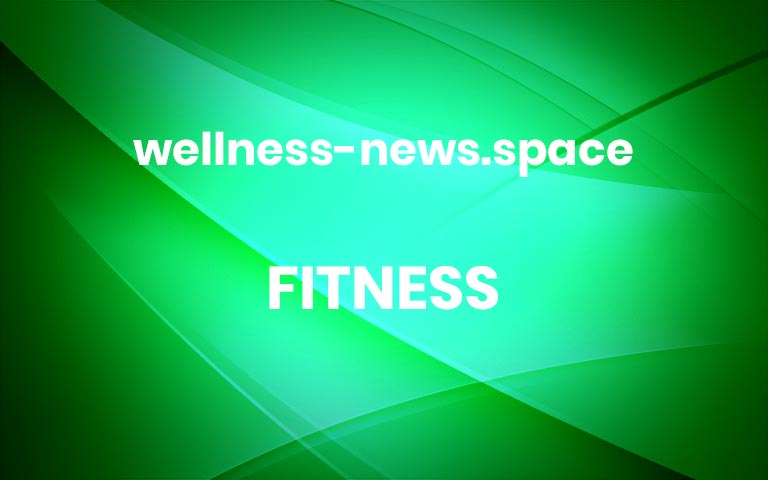Resistance bands are likely the best inexpensive training tool you can get. Whether you are a beginner or already at an advanced fitness level, resistance band exercises can give your muscles a good challenge.You can use resistance bands for exercises that target any body part without putting extra pressure on the joints. And while the usual strength exercises focus on bigger muscle groups, resistance band exercises can be great for targeting those smaller muscles that function as stabilizers, too.Types of resistance bandsResistance bands can differ in shape, size, color, and the level of resistance they provide. Here is an overview of the main categories…Shape & size of resistance bands:Looped bands: can be shorter and thinner, also called mini bands or thera bands, or longer and thicker.Non-looped bands: available with or without handles.Color & resistance level:Resistance bands come in many different colors – not every band in the same color will offer the same resistance – it depends on the manufacturer. Tip:When buying your band, check to see which other resistance bands/levels are available. For lower body training choose a stronger one, for upper body a lighter one. If you are not sure, green often provides intermediate resistance.Resistance levels vary from light to heavy: thinner, smaller bands normally come in ranges from 1-10 kg (2-40 lbs) and longer, thicker ones from 5-90 kg (10-200 lbs) of resistance.How to use resistance band exercises to reach your goalYou can use these exercises in two ways:One: as a full strength workout, total body, or for a specific body part, by choosing 3-5 exercises, doing them for 8-25 reps and repeating 2-5 rounds. The repetitions and rounds will depend on your fitness level and the resistance level of the band.Two: as a warm up, to activate a specific muscle group. Example: If you find it hard to really feel your glutes working…do 2 rounds of Fire Hydrants & Side Squats before your next leg workout. Do as many reps as you need to feel your glutes working Top 11 resistance band exercises1. Wall Lateral PulldownTargeted muscles: Lats, upper backHow to do the exercise:Stand with your back against the wall. Place the resistance band around your thumbs or wrists and stretch your arms straight up over your head. Pull your arms down and your elbows to the side, bent at a 90 degree angle, while stretching the band and bringing your shoulder blades together. Return to the starting position.2. Triceps ExtensionTargeted muscles: Triceps How to do the exercise:Hold the resistance band in your hands with your elbows bent. Put your right elbow over your head with your right forearm parallel to the floor. The left hand should be in front of the left shoulder. Extend your right arm while keeping it close to the head. As the right arm straightens, you should feel the band stretch and the muscles of your right upper arm working. Return to the starting position.Want to feel your triceps really burn? Check out 7 bodyweight exercises for strong triceps.3. Bicep CurlTargeted muscles: Biceps How to do the exercise:Sit on a chair, step, or on your heels. Tuck the resistance band underneath your right knee and hold it with your right hand. Pull your hand up towards your right shoulder against the resistance of the band. Your upper arm should stay stationary as you pull on the band, keeping your elbow underneath your shoulder and close to your body. Release the hold and return to the starting position. Do all repetitions on one side, then switch to the other side.4. Shoulder External RotationTargeted muscles: Shoulders, upper back How to do the exercise:Place a mini band around your wrists. Bend your elbows and keep them close to your body. Move your forearms out to the side to stretch the band. Rotate your palms at the same time, so that they face up once the band is stretched. Return to the starting position.5. Fire HydrantTargeted muscles: Glutes, hamstrings How to do the exercise: Start on all fours. The resistance band should be above your knees. Keep your neck, back, and hips aligned. Move your left leg out to the side to stretch the band. The rest of your body should stay in place; don’t turn to the side. Return to the starting position. Do all repetitions on one side, then switch to the other side.6. Donkey KickTargeted muscles: Glutes, hamstrings How to do the exercise: Start on all fours. The resistance band should be above your knees. Keep your neck, back, and hips aligned. Kick your left heel up to stretch the band. Make sure you keep your hips level and don’t round your back. Return to the starting position. Do all repetitions on one side, then switch to the other side.7. Modified Side Plank Leg LiftsTargeted muscles: Abs (obliques), glutes How to do the exercise:Support your body in a side-plank position. Your right leg is flexed and your left leg straight, so that your right elbow, right knee, and left foot are touching the ground. The resistance band should be placed above your knees. Lift your left leg up against the resistance of the band. Keep your body straight and engage your glutes. Return to the starting position. Do all repetitions on one side, then switch to the other side.8. High Plank Leg LiftsTargeted muscles: Abs (obliques), glutes, hamstringsHow to do the exercise:Support your body in the high plank position with your hands and feet touching the ground. Your hands should be under your shoulders and your body in a straight line from head to heel. The resistance band should be placed around your ankles. Engage your core and glutes and lift your left heel up against the resistance of the band. Keep your body aligned, don’t round your back. Return to the starting position. Do all repetitions on one side, then switch to the other side.9. Squat with Side RaiseTargeted muscles: Glutes, thighsDid you know?This exercise, as well as the Hip Abduction (nr. 11), targets the part of the glutes called the “gluteus medius”. The gluteus medius works especially hard when balancing in a single-leg stance. That’s why strengthening it helps stabilize and improve your running form, too!How to do the exercise:Begin standing with your feet shoulder-width apart, toes parallel or slightly outward. The resistance band should be above your knees. Perform a squat and as you come up, lift your right leg up to the side by squeezing the outer part of your glutes. As you step back, lower yourself into a squat again. You can switch sides with each repetition.10. Jump SquatTargeted muscles: Glutes, thighsHow to do the exercise:Begin standing with your feet shoulder-width apart, toes parallel or slightly outward. The resistance band should be above your knees. Perform a squat and then rise forcefully into a jump. Land softly on the balls of your feet. You can stand back up in between or continue with another jump.Check out more squat variations, most of them can be done with a resistance band, too!11. Hip AbductionTargeted muscles: GlutesHow to do the exercise:Stand next to a wall and hold on to it with your hand for support. The resistance band should be placed around your ankles. You can lessen the resistance by moving the band above your knees. Lift your right leg to the side while squeezing your outer glute. Keep your body straight, don’t bend your torso. Return to the starting position. Do all repetitions on one side, then switch to the other side.Need more ideas?Check out 9 resistance band exercises for the whole body that you can do anywhere for a killer strength workout!*** More



